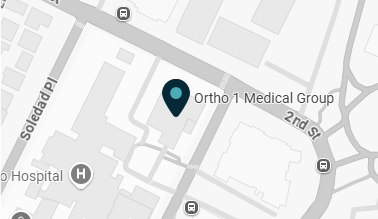When you work in an office or at a desk, you may think your job is risk-free. Think again. While it’s true that desk jobs don’t typically require heavy lifting or other motions that put your body at risk, there’s one injury office workers are more likely to experience: carpal tunnel syndrome (CTS).
CTS is a type of entrapment neuropathy affecting your hands and wrists. You develop the condition when the median nerve associated with movement and feeling in your wrist and hand is compressed.
Repetitive motions on the job, improper hand position when using a keyboard, or keeping your wrists flexed or extended for prolonged periods all contribute to this painful condition. Some health conditions, like thyroid issues and diabetes, also increase your risk, as does pregnancy, older age, and genetics.
If left untreated, CTS can cause permanent nerve damage and loss of function. At Ortho 1 Medical Group, with offices in Chula Vista and La Jolla, California, our providers specialize in diagnosing and treating CTS to restore normal function.
Our providers also know that prevention is often the best medicine. That’s why we’ve curated our top tips for preventing CTS at work. Keep reading to learn what you need to know about stopping CTS before it starts.
1. Practice good posture and ergonomics
By improving your posture at work, you can reduce the strain on your wrists. This helps lower your risk of developing carpal tunnel syndrome. You’ll also want to create an ergonomically correct workstation by positioning your wrists above your hands as you type. And be sure to keep your elbows in, close to your sides, when you’re at the keyboard to reduce pressure on your wrists.
2. Watch your force
People often exert more force than necessary when completing work tasks like typing or writing. Instead of banging on your keyboard or holding pens and other office tools tightly, practice using a lighter touch.
3. Give your wrists and hands a break
If you work at a desk, be sure to give your wrists and hands a break throughout the day. When possible, change up the hand you use for different tasks, like holding your mug or water bottle. During your breaks, stretch your hands and wrists. You don’t need anything complicated to get results. For example, you can make a fist, then stretch your fingers out as far as possible several times.
4. Keep your hands and wrists warm
Warmer temperatures help keep your wrists and hands from getting stiff, which can make CTS worse. If you work from home or in a place where you have access to the thermostat, make sure it’s at a comfortable temperature for your hands. If you don’t control the temperature of your work environment, keep your wrists warm by wearing fingerless gloves or wrist warmers.
5. Practice good habits at home
A healthy lifestyle helps stop carpal tunnel syndrome before it starts. Certain health conditions, like diabetes, hypertension, and obesity, all contribute to swelling and nerve damage, increasing your risk of CTS. By eating right and exercising, you can keep your wrists — and body — as healthy as possible.
You’ll also want to consider how you sleep. If you rest on your hands while you sleep, your risk of CTS increases. You’ll also want to avoid sleeping in positions that bend or twist your wrists. If this is difficult, try wearing braces to keep your wrists in a healthy position at night.
To learn more about preventing carpal tunnel syndrome at work or for help treating your CTS, schedule an appointment over the phone or online at Ortho 1 Medical Group in Southern California.





















